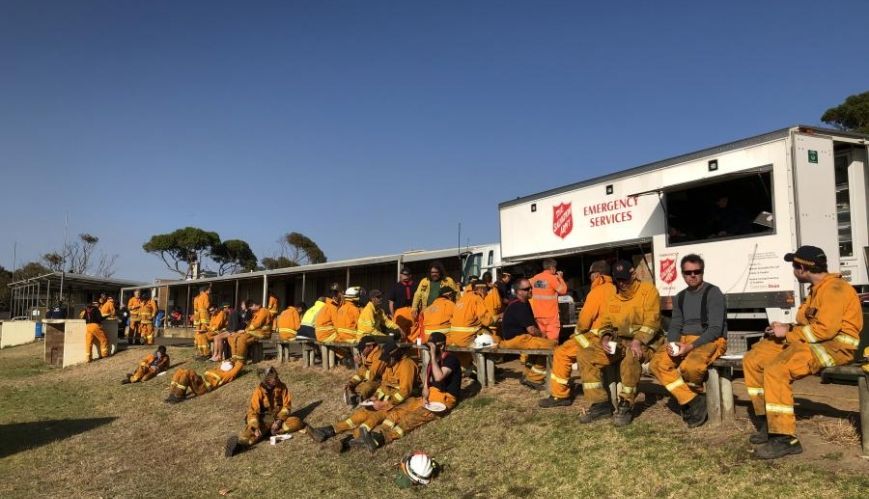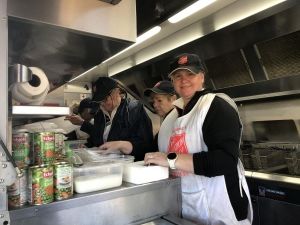Keeping Kangaroo Island firefighters well fed

Keeping Kangaroo Island firefighters well fed
20 January 2020
Salvation Army Emergency Services teams have been feeding and supporting firefighters on Kangaroo Island, South Australia. Photo: Mark Foyle
For months, firefighters and emergency personnel have sacrificed their time and personal safety to combat the spread of bushfires during this national crisis. While we have seen the confronting images of towns engulfed in smoke and eerie red skies, walls of fire dwarfing fire trucks and the faces of those who have lost their lives, we can’t even begin to imagine the extreme conditions firefighters are working in.
Once a fire has been contained or burnt out in one area, firefighters move on to another, and then another. And so it has been for months.
Salvation Army Emergency Services (SAES) teams are there to cater to firefighters and other emergency services during their breaks from the front line.
South Australia SAES coordinator Alan Stevens has been heading up operations on Kangaroo Island where fires have destroyed more than half of the island, consuming the entire national park and extending into farmland.
While cooler weather over the weekend provided opportunities to build control lines, the situation on Kangaroo Island remains volatile. With a 150km-long fire edge to contend with and temperatures rising again this week, firefighters are facing the most challenging conditions in their history.
Around 400 firefighters are battling the blazes alongside 600 military personnel as well as SES, police and paramedics. Working in 12-hour shifts they have been living in a tent city at Kingscote on the edge of the island’s airport.
About 1000 people have turned the paddock, stripped of its hay bales, into a dust bowl. Planes fly low over the camp as they head out to battle the fires from above and transport emergency workers to and from the island.
While the military has its own cooks, the SAES feeds firefighters and emergency personnel – that’s around 400 people each mealtime and, as Alan puts it, “an awful lot of bacon at breakfast!”
 Volunteers prepare a meal for firefighters at Kingscote on Kangaroo Island.
Volunteers prepare a meal for firefighters at Kingscote on Kangaroo Island.
The logistics of catering for hungry, exhausted firefighters on an island during a disaster has its challenges. Food and water must be replenished frequently.
Supplies arrive every three days, making a five-hour journey from Adelaide to the staging ground. Transporting goods also relies on the ferry service, which operates only twice a day and is in high demand.
“Because numbers have gone up considerably, as far as catering is concerned, we’re almost running a shuttle service with our portable freezer and fridge,” says Alan, who has been moving from one fire emergency to another since before Christmas.
Portable freezers and fridges are essential for storing all that bacon and the vast array of other ingredients that ensure those battling the blazes are well-nourished and hydrated.
While fatigue is ever-present and morale takes a constant hit, a decent meal, rest and extended breaks bring welcome relief and help keep spirits up for all those persisting through this unprecedented bushfire emergency.
As firefighters and emergency services continue to face unpredictable and dangerous conditions during the crisis, the SAES will continue to support them at multiple locations across the country.
* Holly Reed is a Content Specialist in The Salvation Army Brand and Marketing team.